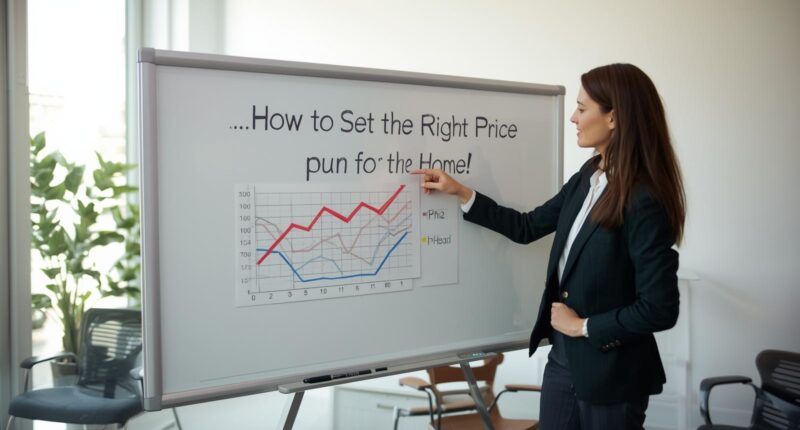How to Set the Right Price for Your Home
Setting the right price for your home is one of the most important steps in the selling process. A property that is priced correctly attracts more buyers, sells faster, and often secures the best possible deal. On the other hand, an overpriced home may sit on the market for months, while an underpriced one leaves money on the table.
In this guide, we’ll explore how to determine the best price for your property, the factors to consider, and strategies to maximize your home’s value.
Why Pricing Your Home Matters
When you put your home on the market, the price is the first thing potential buyers notice. If it’s too high, buyers may skip your listing entirely. If it’s too low, they may assume something is wrong with the property.
According to real estate experts, homes priced correctly within market value sell 32% faster than those that are overpriced. The right pricing strategy helps you:
-
Attract serious buyers.
-
Avoid long listing periods.
-
Negotiate from a stronger position.
-
Achieve a higher final sale price.
Key Factors to Consider When Setting the Price
1. Local Market Trends
The real estate market in your area plays a huge role. Check whether it’s a buyer’s market (more homes than buyers) or a seller’s market (more buyers than homes).
➡️ Tip: Use platforms like Zillow to compare local trends.
2. Comparative Market Analysis (CMA)
A CMA involves comparing your property with similar homes recently sold in your area. Factors such as square footage, location, and age of the property should be considered.
If you’re not comfortable doing this yourself, you can consult a realtor who can provide a professional CMA report.
3. Condition of Your Home
Well-maintained, renovated, and staged homes often command higher prices. Small improvements like fresh paint or landscaping can increase buyer appeal.
(📌 Related Link: Best Curb Appeal Ideas to Attract Buyers)
4. Timing of Sale
The time of year can also affect your home’s selling price. For example, spring and early summer are typically peak seasons, with families looking to move before the school year begins.
5. Appraisal and Inspection
Professional appraisals help you understand your home’s true market value. Similarly, a pre-sale home inspection can identify issues you may want to fix before listing.
Pricing Strategies for Success
1. Price Slightly Below Market Value
This strategy often attracts multiple offers, potentially leading to a bidding war.
2. Round Number vs. Psychological Pricing
Listing at $299,000 instead of $300,000 can make a difference. Buyers perceive the price as significantly lower.
3. Leave Room for Negotiation
While it’s important not to overprice, leaving a little flexibility allows buyers to feel like they’re getting a deal.
Common Pricing Mistakes to Avoid
-
Ignoring Market Data – Pricing based on emotion rather than facts.
-
Overvaluing Renovations – Not all upgrades yield a high return.
-
Chasing the Market – Repeatedly lowering the price after months of no offers.
-
Setting the Price Too Low – Losing potential equity for a quick sale.
Table: Factors Affecting Home Pricing
| Factor | Impact on Price | Why It Matters |
|---|---|---|
| Local Market Conditions | High / Medium / Low | Determines buyer vs seller demand |
| Comparable Homes (CMA) | High | Sets a realistic benchmark for pricing |
| Condition of the Home | High | Well-maintained homes attract higher offers |
| Location | Very High | Proximity to schools, jobs, and amenities |
| Timing of Sale | Medium | Seasonal trends influence buyer competition |
| Appraisal & Inspection | Medium | Professional evaluation ensures fair value |
Steps to Set the Right Price for Your Home
-
Research recent sales in your neighborhood.
-
Consider the condition, upgrades, and unique features of your home.
-
Hire a professional appraiser if needed.
-
Consult with a trusted real estate agent.
-
Choose a pricing strategy (market value, slightly below, or flexible).
-
Monitor buyer activity and feedback after listing.
Final Thoughts
Setting the right price for your home requires balancing market data, professional advice, and realistic expectations. The correct strategy not only ensures a faster sale but also maximizes your financial return.
Remember: the goal isn’t just to sell your home quickly but to sell it at the right price.









